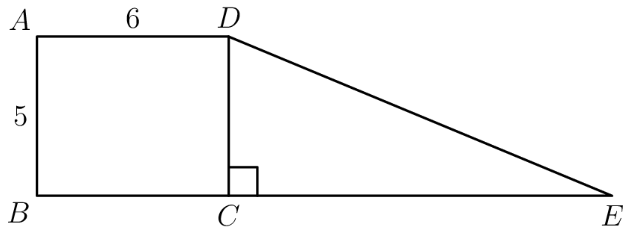2014 AMC 8
Complete problem set with solutions and individual problem pages
Problem 14 Medium
Rectangle and right triangle have the same area. They are joined to form a trapezoid, as shown. What is ?

- A.
- B.
- C.
- D.
- E.
Answer:B
Solution 1
The area of is . The area of is , which also must be equal to the area of , which, since , must in turn equal . Through transitivity, then, , and . Then, using the Pythagorean Theorem, you should be able to figure out that is a triangle, so , or .
Solution 2
The area of the rectangle is Since the parallel line pairs are identical, . Let be . is the area of the right triangle. Solving for , we get According to the Pythagorean Theorem, we have a triangle. So, the hypotenuse has to be .
